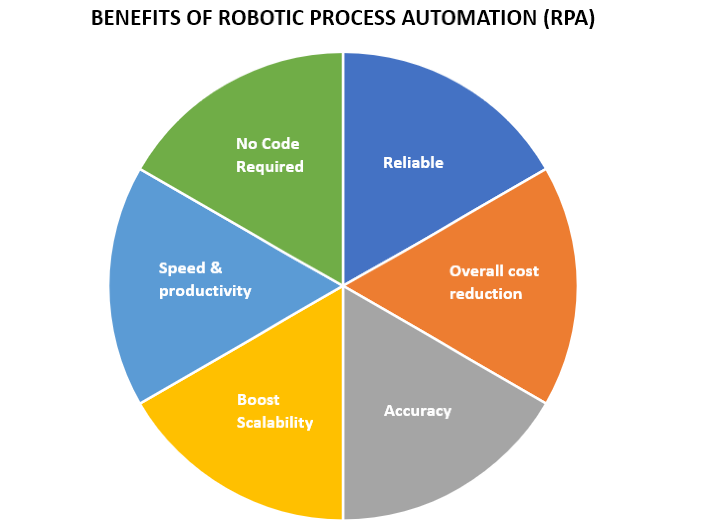
 Data Structure
Data Structure Networking
Networking RDBMS
RDBMS Operating System
Operating System Java
Java MS Excel
MS Excel iOS
iOS HTML
HTML CSS
CSS Android
Android Python
Python C Programming
C Programming C++
C++ C#
C# MongoDB
MongoDB MySQL
MySQL Javascript
Javascript PHP
PHP
- Selected Reading
- UPSC IAS Exams Notes
- Developer's Best Practices
- Questions and Answers
- Effective Resume Writing
- HR Interview Questions
- Computer Glossary
- Who is Who
Robotics Process Automation - An Introduction
Introduction
Robotic Process Automation (RPA) is a technology that can mimic the actions of human beings regarding their interaction with software systems and digital systems. With Robotic Process automation building, managing, and deploying such tools and software becomes extremely easy. Such technology is primarily used by business processes.
Robotic Process Automation ? A wider picture
Different types of Robotic Process Automation
There are three types of RPA software.
Attended Robotic Process Automation ? It requires very less human intervention
Unattended Robotic Process Automation ? It required no human intervention
Hybrid Robotic Process Automation ? It combines both Attended and unattended Robotic Process
Why do we need Robotic Process Automation?
The main benefit of RPA is that it is better than the traditional methods of automation. With RPA it is quite cheaper to automate the systems. RPA has the advantage that it does not affect the current systems and can easily integrate into existing systems. Another reason is that it is highly scalable and can adapt itself to changing business needs.
Features of Robotic Process Automation
RPA can be completely coded using computer programing languages.
RPA is dependent on the process.
RPA is easily implemented and can be integrated into existing systems
RPA can save valuable time
RPA requires no hardware and is run on virtual systems.
Differences between Robotic Process Automation and Automation
Robotic Process Automation |
Automation |
|---|---|
1. Computer software and tools are used |
Physical equipment is used to achieve automation |
2. Requires no human effort |
Requires minimum human effort |
3. Can easily be integrated into existing systems |
The existing hardware systems have to be modified in case of automation |
4. The interface can be easily exposed using APIs |
No APIs systems are available which makes it difficult to access its interface |
5. Initially costly but in the long run proves to be economic. Very less maintenance is required. |
Initially cheaper to set up but requires a lot of maintenance in the future. Thus overhead costs add up in the long run |

Cost ? The cost of RPA software and tools is less in the long run. Initially, the cost may be lille higher but proves economical over the years. It is highly scalable with a positive impact on business processes. It reduces the cost to as much as 70?80%.
Reliability ? All RPA systems have a set of rules and standards that act as regulations in which each system works. They offload tasks from employees who have the common problem of being less fatigue.
Accuracy ? RPA systems are highly accurate as they are software and robots in action Chances of mistakes are minimal with no signs of antiqueness. They are even less prone to errors.
No Code? No specific coding skills are required to become an RPA expert.
Speed & Productivity ? RPA systems have a reliable and high speed of operation and thereby lead to enhanced productivity as they are fast in operation.
Scalability ? They are scalable systems.
Popular RPA software and tools are
Automation Anywhere
UiPath
BluePrism
Pega
OpenConnect
Conclusion
Robotic Process Automation is taking over traditional methods of automation by the breeze. It is more convenient, less costly, easily maintainable, and has an API interface for its end users. This makes it a popular choice for organizations looking to automate a process that is repetitive and redundant.

